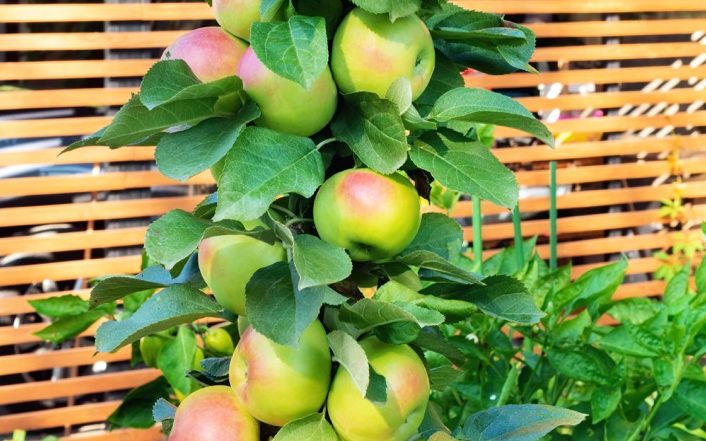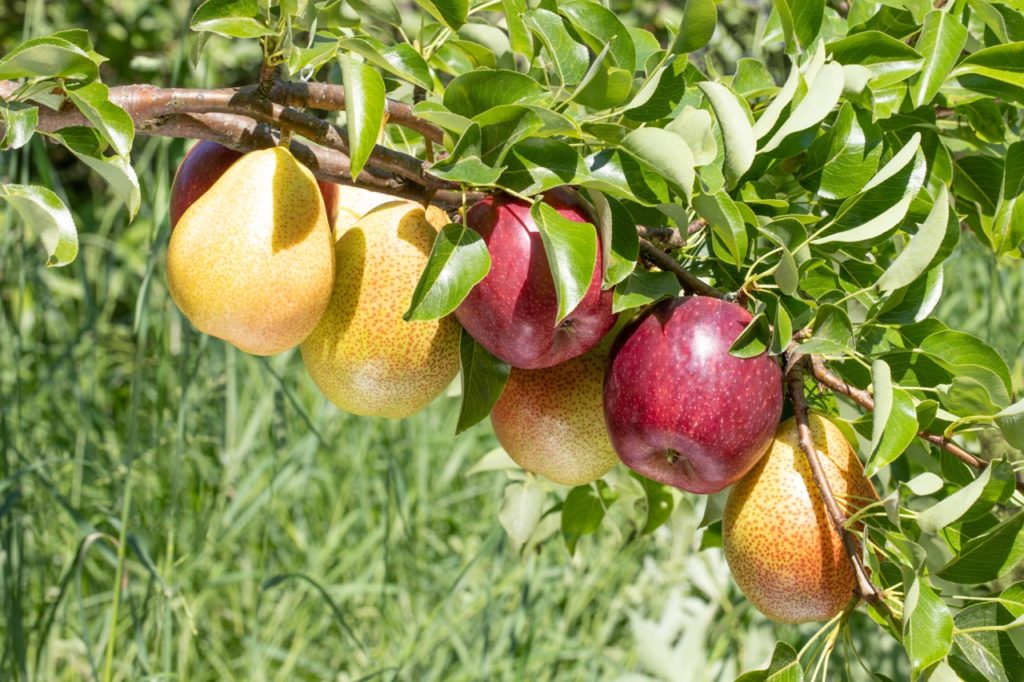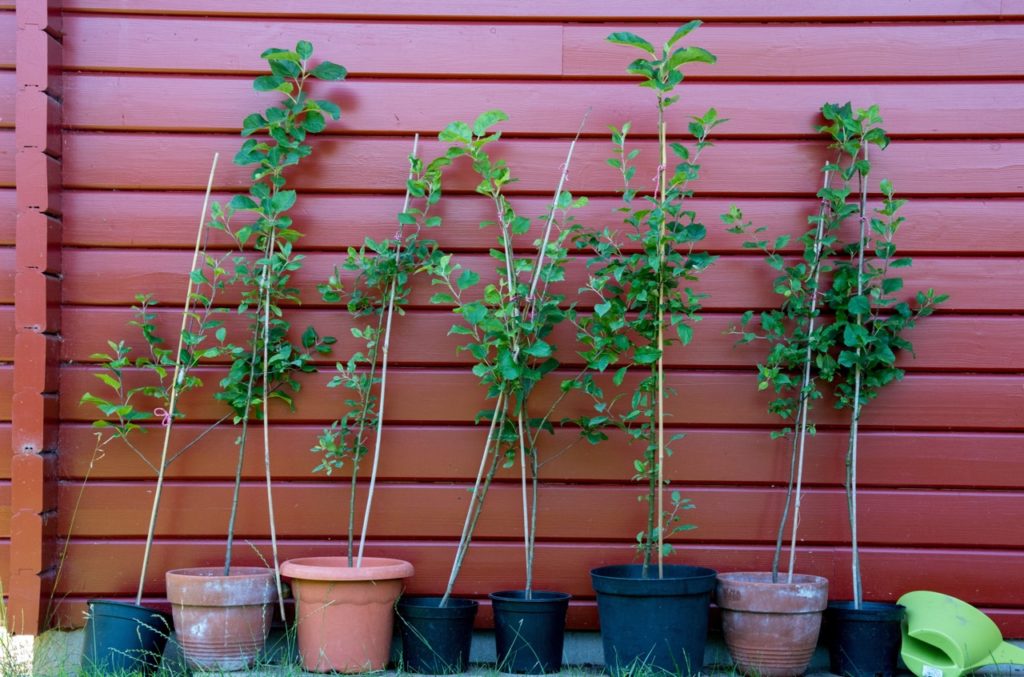You Can Grow Apple Trees In Pots – But The Rootstock, Shape And Form Are Important


Elizabeth is a Permaculture Garden Designer, Sustainability Consultant and Professional Writer, working as an advocate for positive change. She graduated from the University of St. Andrews with an MA in English and Philosophy and obtained a Diploma in Applied Permaculture Design from the Permaculture Association.
Reviewed By COLIN SKELLY

Colin is a Horticulturist and Horticultural Consultant with experience in a range of practical and managerial roles across heritage, commercial and public horticulture. He holds the Royal Horticultural Society’s Master of Horticulture award and has a particular interest in horticultural ecology and naturalistic planting for habitat and climate resilience.
Contributions From JULIE BELLEMANN

Julie and the team strive to do more for the community than just grow trees. Described as a ‘social enterprise tree nursery’, Sheffield Fruit Trees is a not-for-profit organisation that is working towards planting more edible trees across the whole of Sheffield to connect more people to their food.
IN THIS GUIDE
Apples are a great choice if you want to grow a fruit tree in your garden and they are the easiest fruit tree for beginners in the UK to grow.
Even with a very small garden, you might be able to grow an apple tree where you live, as long as you choose the right variety.
Apple trees are certainly easier to grow in the ground and will require far less care and attention when grown in this way.
If you do have space to grow an apple tree in the ground, then I would recommend that you choose a spot carefully so that the tree you choose won’t take up too much space.
But, of course, not everyone will be able to plant a tree in the ground in their garden and might be wondering if they can grow an apple tree in a pot or container.
Can You Grow Apple Trees In Containers?
The answer is yes, but there are certain caveats and you will need to carefully consider the apple tree variety that you choose, as some will be far easier to grow in pots than others.

There are several things you will also need to think about before growing an apple tree in a container, including:
Rootstock
The first thing to think about if you would like to grow an apple tree in a container is the rootstock.
Apple trees that you can buy, either as pot-grown patio trees or bare-root specimens, are grafted.
They are made up of a rootstock (the bottom portion), which dictates the size and vigour of the tree, and the scion (the upper part), which determines the size, number and taste of the fruits.

The best choice when growing an apple tree in a container is a dwarfing rootstock, as this restricts the size to which the tree will grow and makes it easier to grow in a container.
M27 is the rootstock most commonly used for patio apple trees to be grown in containers in the UK.
When grown on this rootstock, apple trees can be restricted to grow no more than around 1.5m in height.
M9 and M26 rootstocks are also often used, producing trees that can grow to around 2.5m or so in height.
Shape & Form
Another thing to think about when choosing an apple tree to grow in a container is whether you will purchase one that is already trained into a particular form, such as a columnar, cordon or fan.

Shaping and training can restrict the size and vigour of an apple tree and can be important when growing an apple tree in a container.
You can purchase pre-trained specimens or buy young trees and undertake training and pruning yourself.
Duo Fruit Trees
When choosing apple trees to grow in containers or in small spaces in general, you can also purchase plants which have more than one variety of fruit grafted onto one rootstock.
One option to consider if you are growing an apple tree in a container is a duo fruit tree that bears both eating and cooking apples.
This is an interesting space-saving idea to contemplate before you decide upon a particular individual cultivar.

“Apples with two or more cultivars grafted onto a rootstock will normally be from compatible pollination groups,” shares Master Horticulturist Colin Skelly.
“This means that the flowers will emerge at similar times to enable pollination.
“Where single cultivar trees are being selected, make sure to buy them from compatible pollination groups.”1Flowering times of apples. (n.d.). RHS Pollination Groups. Retrieved April 11, 2023, from https://www.rhs.org.uk/advice/pdfs/applepollinationgroups.pdf
Suitable Containers
When choosing a container for a patio tree of any kind, including apple trees, it is important to choose one that is as large and sturdy as possible.
It must be large, strong and heavy enough not only to accommodate the root system of the tree you have chosen but also to avoid issues with toppling or blowing over as the tree grows.

The container you choose should have good drainage at the base, to allow excess water to drain away freely.
Apple trees need moderately free-draining conditions, though it will also be important to provide sufficient moisture throughout the year.
Container Compost
Since patio apple trees will remain in a container over multiple years, it is important to choose the right growing medium to ensure that fertile conditions can be maintained.
For an apple tree grown in a pot, a loam or soil-based compost mix is ideal.

You can choose a peat-free multipurpose compost with added John Innes, or create your own mix with soil or loam, homemade compost and leaf mould.
Potting Up
Whether you have purchased a bare-root or a pot-grown apple tree, it is important to pot up your tree as soon as possible into the container in which it will continue to grow.
Place the apple tree into the container on top of a small amount of your growing medium.
Make sure that it is upright and that the tree is planted to the soil mark or the depth that it was at in its previous pot.
Then, fill in more of the growing medium around the sides of the root ball.
Once you have planted the apple tree in its container, water it well, then mulch around the top of the container with organic matter.

This helps to retain moisture and add fertility over time, as long as you make sure that the mulch does not mound up around the trunk, as this can cause rotting in wet conditions.
Typically, you can increase the yield and performance of an apple tree by creating guilds of beneficial companion plants around its base.
When growing in a large container, you might create a small guild within the same container.
However, it is generally easier to plant certain companions in other pots close by.
You might consider planting a pot with spring bulbs to entice early pollinators to the area, or you might also grow alliums and aromatic herbs for pest control and beneficial wildlife attraction nearby.
Potted Apple Tree Care
As mentioned above, caring for apple trees in containers will take a little more work, time and attention than growing an apple tree in the ground, but it is still not too daunting a process, as long as you remember these basic elements of care.
Place your container in a suitable spot.
Sweeter dessert apples or eating apples tend to require a position in full sun, where fruits will develop and ripen most successfully, whilst crab apples and tarter cooking apples can often cope with dappled or partial shade.
Make sure that you water well and consistently during the spring and summer, paying particular attention to hydration when the weather is warm and dry.

Remember, any plants growing in a pot will typically need watering more frequently than plants growing in the ground.
In certain areas and with specific varieties, you may need to protect the tree blossom against a late frost with some form of cover, such as the use of horticultural fleece.
Feed your apple tree by replenishing the mulch on the top of your container each year in spring and, if the growth seems poor, add organic fertiliser.
Repot your tree with new compost every 2-3 years to ensure that the fertility remains sufficient for its needs.
Take good care of an apple tree in a container and it can provide you with fairly small but worthwhile apple harvests for a number of years to come.
References
- 1Flowering times of apples. (n.d.). RHS Pollination Groups. Retrieved April 11, 2023, from https://www.rhs.org.uk/advice/pdfs/applepollinationgroups.pdf
